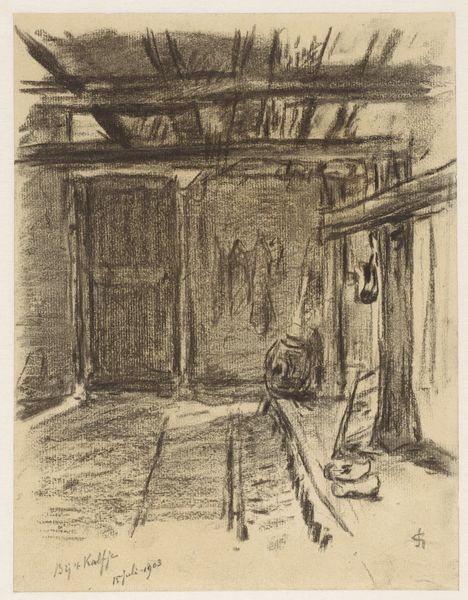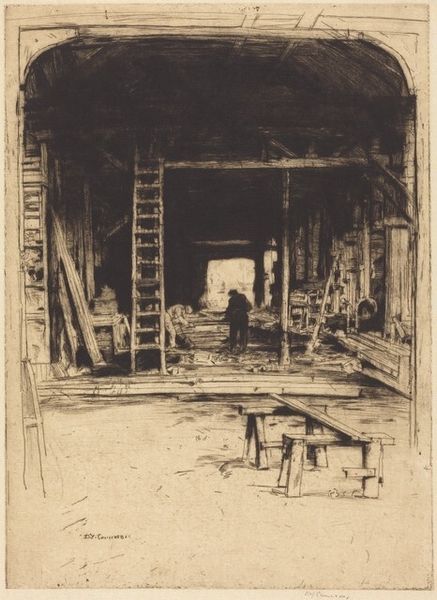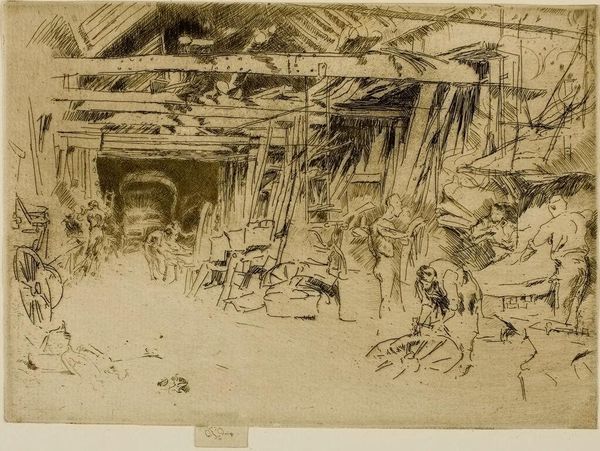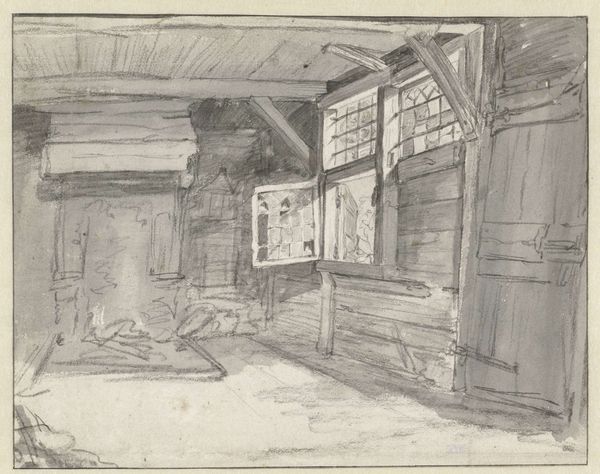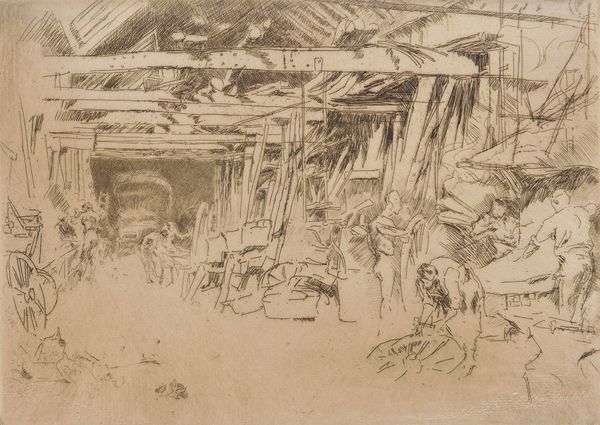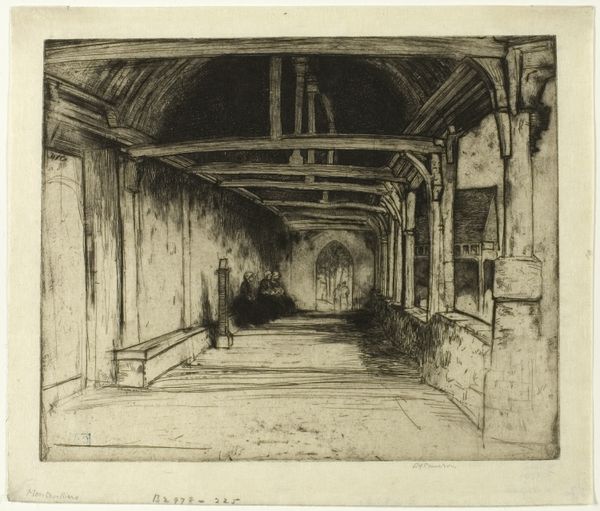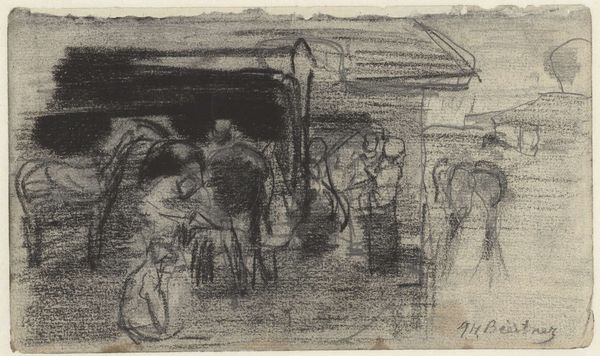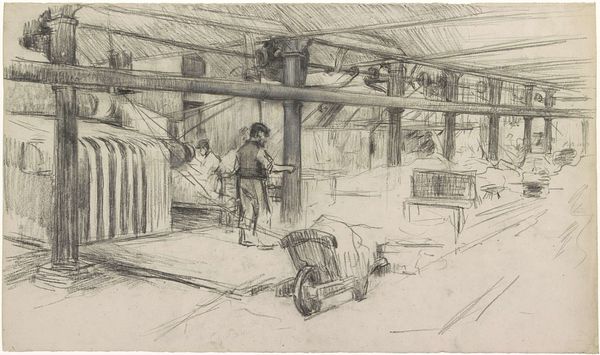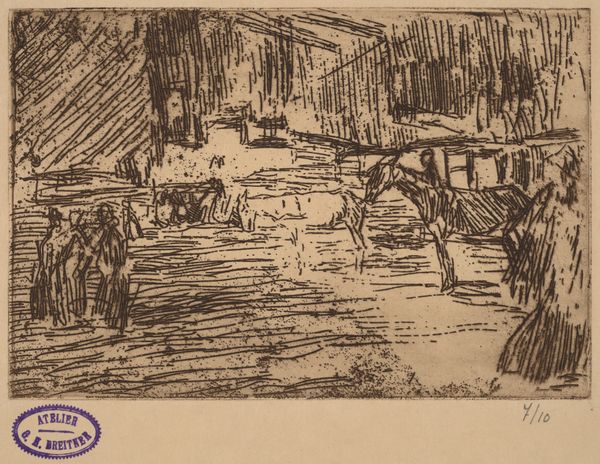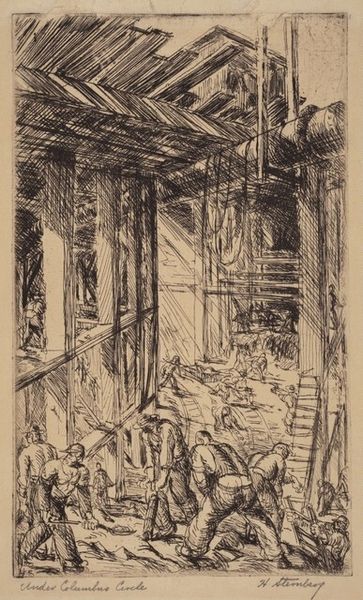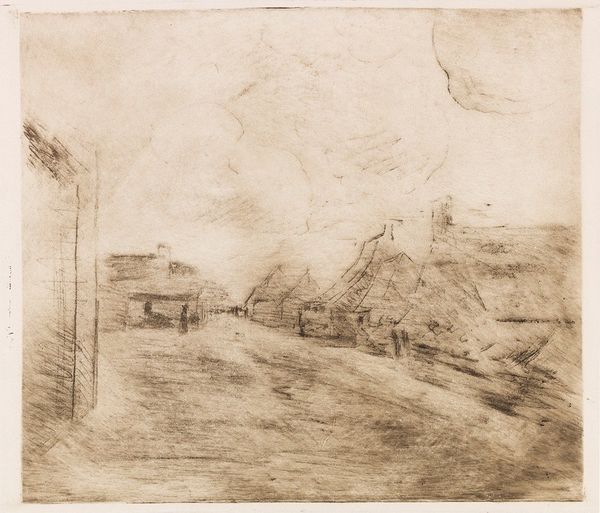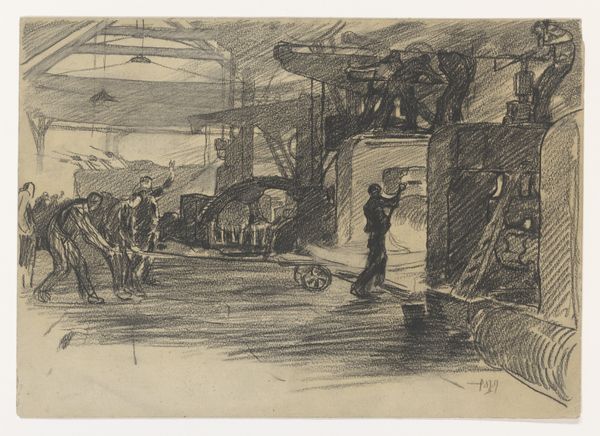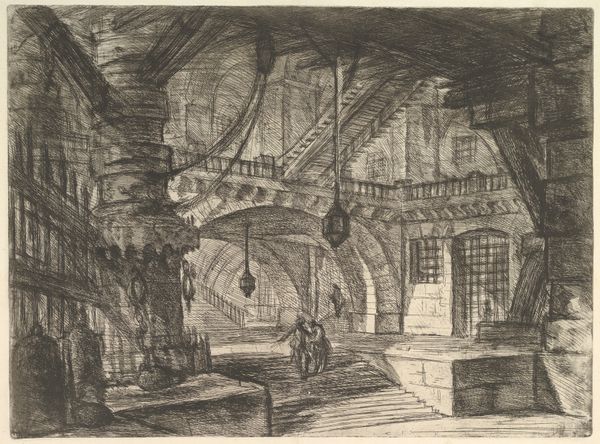
drawing, print, etching, graphite
#
drawing
#
toned paper
# print
#
etching
#
landscape
#
pencil drawing
#
graphite
#
realism
Copyright: National Gallery of Art: CC0 1.0
Editor: This is David Young Cameron’s "Dutch Interior" from 1892, created using etching and graphite. It's incredibly atmospheric, almost claustrophobic, with that long, receding space. What do you see in this piece? Curator: I see an incredible document of labor and industry. Look at the etched lines, mimicking the raw, repetitive construction of the space itself. Consider the labor that went into creating both the depicted structure and the print itself. The printmaking process--the application of acid, the precise timing, the repetitive pulling of prints--mirrors the industrialized labor likely occurring within that building. Editor: That's a perspective I hadn’t considered. I was focusing more on the aesthetic, the sense of depth. But you're right, the process really emphasizes the labor involved. Curator: Absolutely. And notice how Cameron elevates a seemingly mundane interior to a subject worthy of artistic representation. He blurs the lines between documentation and artistic expression. Where would you place the setting of this drawing within its historical context? Editor: Well, considering it was made in 1892, it could represent one of the new industrialized spaces taking hold at the time, right? Challenging traditional ideas of landscape art by looking at what’s man-made? Curator: Precisely. It invites us to contemplate the social and economic forces that shaped both the physical environment and artistic practice of the late 19th century. Even the materiality of the toned paper and graphite suggests an economy of means, a rejection of lavish materials for something more readily accessible. Editor: I'm struck by how much the material choices reflect the themes of industry and labor now. It definitely provides a new way to interpret art. Curator: Exactly. Seeing the art and its historical means of production can shape its conceptualisation.
Comments
No comments
Be the first to comment and join the conversation on the ultimate creative platform.
